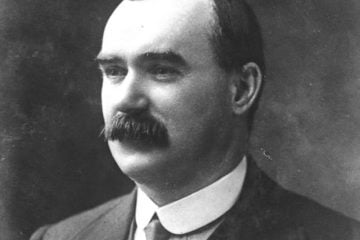As capitalist interests began to develop in England in the 15th and 16th century, so did their interest in colonisation overseas. In the year 1600, the East India Company, a joint-stock company of various London merchants, was granted a monopoly over trade in the East Indies. The Royal Charter served to transform sporadic, individual merchant expeditions in the East Indies, into a powerful, centralised political and economic force.
The Indian subcontinent, in contrast to the American continent, already had established trade relations with England, and every other corner of the known world. The region was an economic powerhouse. Between 1500 and 1600, it is estimated that the Indian subcontinent produced around 25% of world GDP.
The region had a powerful and extremely wealthy ruling class, and deep, ancient property relations. At the time, this enormous region was not a single nation-state, but it was predominantly ruled by the Mughal Empire. The Mughals faced fierce competition from other dynasties such as the Persian, Afghan, and later, the Maratha Empires.
In 1608, the English East India Company was granted permission by the Mughal authorities, to establish a settlement in Surat (Gujarat). Over the next half a century the Company established more trading posts on both the East and West Coasts, as did their competitors such as the Portugese, the French, and the Dutch East India Company.
In 1661, after the restoration of the monarchy in England, Bombay was ceded to the British Crown by Portugal as part of a wedding dowry for Catherine of Braganza. The Company was granted the territory, ‘in trust’, to govern on behalf of the English Crown. Thus it was becoming more than just a merchant company. It was increasingly becoming a governing and military arm of the English state overseas.
The Company was granted access to facilitate its monopoly on trade by the Mughal Empire in exchange for a tribute. For a long time this arrangement suited the Mughal Emperor and princes, as the enormous network of the Company increased the overall volume of trade, making the Mughal princes even richer for even less administrative cost.
As time went on though, more and more of the regional governance of India was handed over to the Company, such as the collection of taxes and tributes from the local villages. By the middle of the 18th Century, the military technology and weight of the British was far superior to the Mughal’s or any other power in the region.
The Company had moved beyond being a simple trading corporation and was now a private mercenary group, waging war on behalf of the competing dynasties, and a local governing power. From 1757 onwards the period of ‘Company Rule in India’ began, with the East India Company now governing the majority of the region. From this period onwards, the crimes of British Empire began to take on gigantic proportions for the people of India.
In 1770, the Great Bengal famine decimated the local population. The crisis began with a failed monsoon and two failed rice crops. Such natural occurrences had happened countless times in the region. But this famine was not a natural catastrophe. It was the direct product of capitalism. As the famine caused the Company’s profits from exports to decline, they attempted to make up for their loss by increasing their collections from the villages.
Those who were still alive were made to pay the difference for those who had died. The company continued to export what grain it could for sale on the market, with no attempt to distribute food in the starving areas. Between one fifth and one third of the population of the Bengal region died of starvation or disease. Between 2 million and 10 million lives were lost.
The British imperialists neither understood nor cared about the functions of the despotic state which their administration had supplanted. Whilst it is true that the Mughal dynasty had brutally exploited the peasant communities, they had also fulfilled a social function by maintaining collective works and mitigating disasters like crop failure. The British capitalists only cared about extracting profits, with disastrous results.
Company rule in India saw a complete neglect and collapse of public works. This accentuated the so-called ‘natural disasters’ of famine, drought and disease. The development of British manufacturing towards the end of the 1700s and the early 1800s, and the flooding of the Indian market with cheap products decimated the manufacturing industry of the Indian village. The very fabric of Indian society was torn to shreds as capitalism penetrated the subcontinent.
Company rule in India lasted until 1858, when it’s mismanagement and decline forced the British to bring India under the direct governance of the British Crown. Company rule was replaced with the British Raj. The crimes of British imperialism in India were only set to continue.




0 Comments